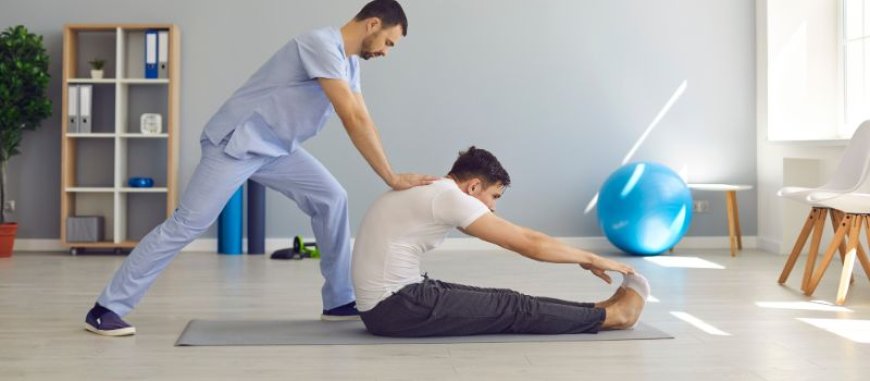Regaining Strength After Stroke: Physical Therapy for Improved Mobility
Life's uncertain but loosing out hope is also not a solution, however, if one still feels like that, then contact us at NeuroLink, Rehabilitation Centre in Delhi where we help you recover your life from an uncertain incident.

A stroke can have a profound impact on an individual's life, often resulting in significant physical and cognitive impairments. However, with dedicated physical therapy, many stroke survivors can regain strength, improve mobility, and enhance their overall quality of life. This article explores the critical role of physical therapy in stroke recovery, highlighting the benefits, key exercises, and tips for maximizing rehabilitation outcomes.
Understanding the Impact of Stroke
A stroke occurs when the blood supply to a part of the brain is interrupted or reduced, preventing brain tissue from getting the oxygen and nutrients it needs. This can lead to brain cell death and significant physical impairments, including:
- Weakness or paralysis on one side of the body (hemiplegia)
- Loss of coordination and balance
- Difficulty walking or performing daily activities
- Muscle stiffness or spasticity
The Role of Physical Therapy in Stroke Recovery
Physical therapy is a cornerstone of stroke rehabilitation. It aims to help stroke survivors regain physical function and independence through targeted exercises and therapeutic techniques. The primary goals of physical therapy for stroke recovery include:
-
Improving Muscle Strength and Control: Strengthening weakened muscles and improving motor control are essential for regaining independence in daily activities.
-
Enhancing Mobility and Balance: Physical therapists work on improving gait, balance, and coordination to reduce the risk of falls and increase mobility.
-
Reducing Spasticity and Muscle Stiffness: Techniques such as stretching, range-of-motion exercises, and the use of splints or orthotic devices can help manage muscle stiffness and spasticity.
-
Promoting Cardiovascular Health: Cardiovascular exercises, such as walking or stationary cycling, are incorporated to improve overall fitness and endurance.
Key Physical Therapy Exercises for Stroke Recovery
Effective stroke rehabilitation involves a variety of exercises tailored to the individual's specific needs and abilities. Some key exercises include:
1. Range-of-Motion Exercises
These exercises help maintain or improve joint flexibility and prevent stiffness. Examples include:
- Passive Range-of-Motion: A therapist or caregiver moves the affected limb through its full range of motion.
- Active Range-of-Motion: The individual performs the movement independently, using the unaffected limb to assist if needed.
2. Strengthening Exercises
Strength training focuses on improving muscle strength and endurance. Examples include:
- Resisted Movements: Using resistance bands or weights to perform exercises like bicep curls, leg lifts, or ankle dorsiflexion.
- Functional Strengthening: Practicing movements that mimic daily activities, such as sit-to-stand exercises or step-ups.
3. Balance and Coordination Exercises
These exercises help improve stability and coordination, reducing the risk of falls. Examples include:
- Standing Balance: Standing on one leg or using a balance board to challenge stability.
- Coordination Drills: Tasks that require coordination between the affected and unaffected limbs, such as tapping toes or catching a ball.
4. Gait Training
Gait training focuses on improving walking ability and technique. Examples include:
- Treadmill Walking: Walking on a treadmill with or without support to practice a more natural gait pattern.
- Overground Walking: Walking on different surfaces and navigating obstacles to improve real-world walking skills.
5. Functional Mobility Training
This type of training focuses on improving the ability to perform daily activities. Examples include:
- Transfers: Practicing moving from bed to chair, chair to standing, and vice versa.
- ADL Training: Activities of daily living (ADLs) such as dressing, bathing, and grooming.
Tips for Maximizing Rehabilitation Outcomes
Stroke recovery is a challenging journey that requires patience, persistence, and support. Here are some tips to maximize rehabilitation outcomes:
1. Set Realistic Goals
Setting achievable, short-term goals helps maintain motivation and track progress. Work with your physical therapist to establish individualized goals based on your abilities and desired outcomes.
2. Stay Consistent
Consistency is key in stroke rehabilitation. Regularly attending therapy sessions and performing prescribed exercises at home can significantly impact recovery progress.
3. Engage in a Variety of Activities
Incorporating a mix of exercises and activities can help keep rehabilitation interesting and engaging. This might include aquatic therapy, virtual reality games, or community-based exercise programs.
4. Involve Family and Caregivers
Family members and caregivers play a vital role in stroke recovery. They can provide emotional support, assist with exercises, and help maintain a positive and encouraging environment.
5. Monitor Progress and Adjust as Needed
Regularly review your progress with your physical therapist and adjust your rehabilitation plan as needed. This ensures that you continue to challenge yourself and make meaningful gains.
Conclusion
Regaining strength and improving mobility after a stroke is a challenging yet achievable goal with the help of dedicated physical therapy. By focusing on personalized exercises and therapeutic techniques, stroke survivors can work towards reclaiming their independence and enhancing their quality of life. Remember, patience, persistence, and support are essential components of a successful stroke recovery journey.
What's Your Reaction?


















